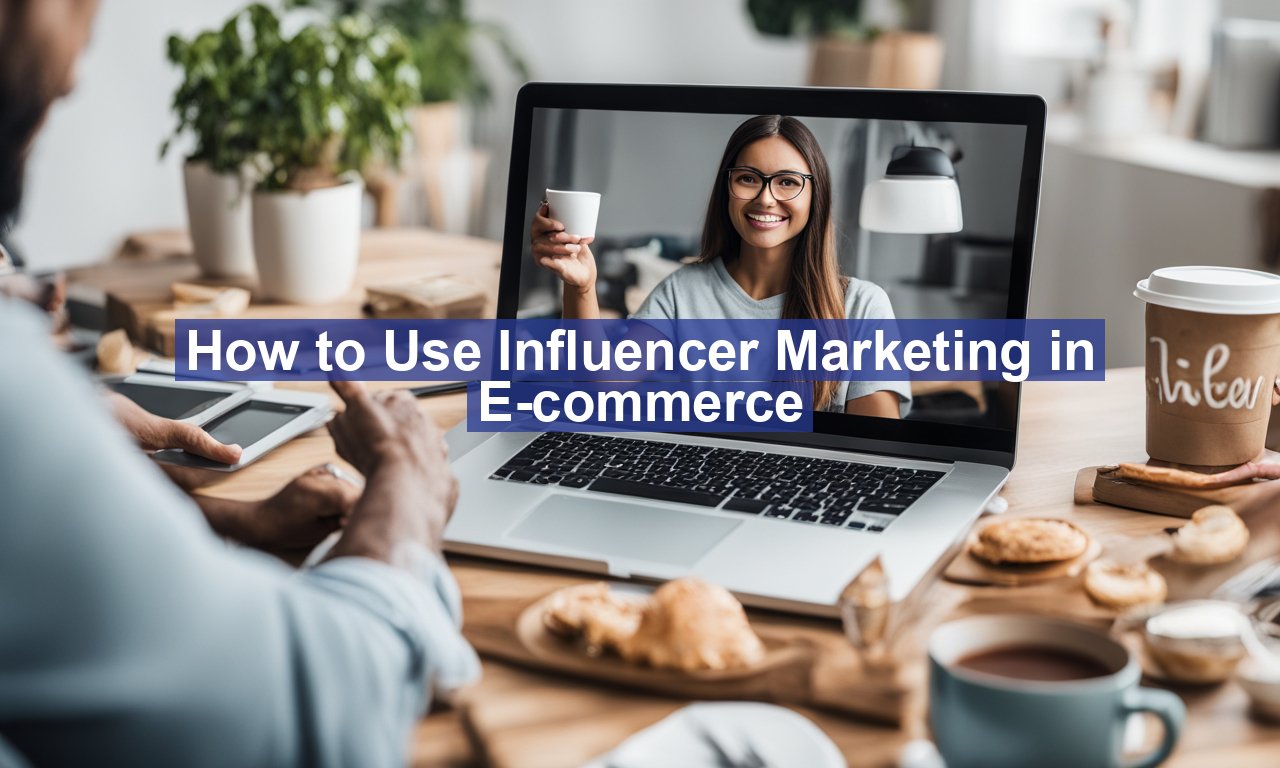How to use Influencer marketing in E-commerce? Are you looking to skyrocket your e-commerce business through influencer marketing but don’t know where to begin? Picture this: Your brand gets showcased by a trusted figure with a dedicated following, leading to soaring engagement rates and unprecedented sales figures. Sounds like a dream, right? Well, this dream can become your reality.
This article delves into the nuts and bolts of using influencer marketing in e-commerce, offering you actionable steps and expert advice to get started today. Whether you’re an established e-commerce retailer or a budding entrepreneur, you will find invaluable insights to elevate your marketing game.
How to Use Influencer Marketing in E-commerce? Step-by-Step Guide
What is Influencer Marketing?
Influencer marketing is a form of social media marketing that leverages endorsements and product mentions from individuals who have established a significant following and credibility within their niche. These influencers have the power to affect the purchasing decisions of their audience by promote your products or services.
Why is Influencer Marketing Crucial for E-commerce?
Influencer marketing can offer several unique advantages for e-commerce businesses:
- Enhance Credibility: People trust recommendations from influencers they follow.
- Targeted Reach: Influencers often specialize in niches, enabling targeted marketing.
- Cost-Effective: Compared to traditional advertising, influencer marketing can provide a better return on investment.
- SEO Benefits: Collaborations often yield valuable backlinks that improve search engine ranking.
How to Choose the Right Influencers
Choose the right influencer is crucial for the success of your campaign. Here are some tips:
- Understand Your Audience
Before you start, identify your target audience. Understand their demographics, interests, and behavior. Resources like Pew Research provide valuable insights into social media usage trends. - Relevance Over Reach
While it may be tempting to choose influencers with massive followings, relevance to your brand often yields better results. An influencer who resonates with your brand narrative and has a smaller but highly engaged audience can sometimes offer better ROI. - Analyze Engagement Rates
It’s important to look beyond the follower count. High engagement rates indicate that the influencer’s audience finds their content relatable & reliable. Make sure to check the comments section for genuine interactions and testimonials. - Vet Influencers
Conduct a background check to ensure that the influencer has a good track record of working with brands. Ensure that they haven’t been involved in any scandals that could harm your brand’s reputation.
Types of Influencer Collaborations
There are multiple ways to collaborate with influencers. Here are a few tried-and-tested methods:
- Sponsored Posts
These are direct promotions where an influencer creates a post highlighting your product. This type of collaboration usually includes a photo, video, or blog post, along with a personal review or testimonial. - Product Reviews and Unboxings
Sending your product to an influencer with an honest review or unboxing video. These types of collaborations often generate high engagement as audiences value authentic opinions. - Giveaways and Contests
Influencers can host contests or giveaways, encouraging their followers to engage with your brand to win prizes. This method can significantly boost your brand’s visibility & follower count. - Affiliate Marketing
Provide influencers with a unique promo code or affiliate link to share with their followers. This tracks sales generated through the influencer, offering a mutually beneficial arrangement.
Negotiating and Setting Expectations
Success in influencer marketing isn’t just about finding the right person; it’s also about setting clear expectations. Discuss the following:
- Content Guidelines: Specify the type of content you expect, including tone, style, and format.
- Deliver-ables: Outline the number of posts, stories, or videos required.
- Timeline: Set realistic deadlines for content design & publication.
- Compensation: Be upfront about pay rates. Whether it’s a flat fee, commission, or freebies, ensure everything is crystal clear.
Measuring Success
Once your campaign is up & running, the next crucial step is measuring its success. Here are the key metrics to track:
- Engagement Rates
Measure likes, comments, shares, & overall interaction with the influencer’s contented. - Traffic
Track the amount of traffic driven to your e-commerce site through the influencer’s posts. Tools like Google Analytics can be very useful for this purpose. (Need a tutorial on this? Check out Google’s help page for beginners. - Sales Conversions
Monitor the sales generated directly from your campaign. Unique promo codes or affiliate links may help in tracking this. - Audience Growth
Keep an eye on the growth of your social media followers and email subscribers during and after the campaign.
Best Practices for Sustained Success
- Consistency: Long-term partnerships often yield better results than one-off collaborations.
- Authenticity: Allow influencers to maintain their voice. Their authenticity is why their audience trusts them.
- Feedback Loop: Regularly communicate with influencers for feedback and possible improvements.
- Adapt and Evolve: Stay updated with the latest trends and adapt your strategies accordingly.
Influencer marketing in e-commerce isn’t just a passing trend; it’s a powerful tool that, when done right, can lead to significant growth. By choosing the right influencers, setting clear expectations, and continually measuring results, you can create an effective influencer marketing strategy that drives long-term success. Ready to start? Dive in and watch your e-commerce brand flourish!


